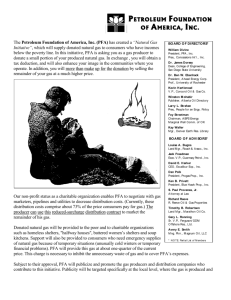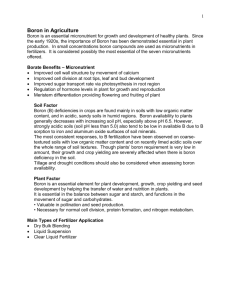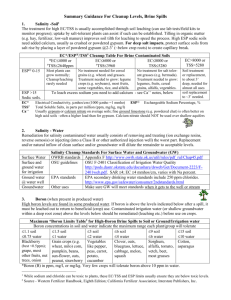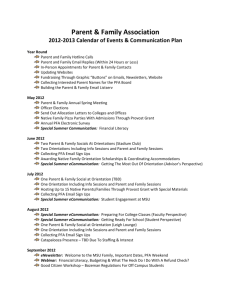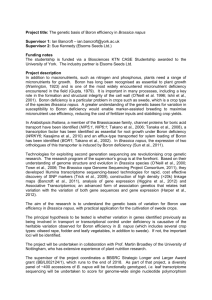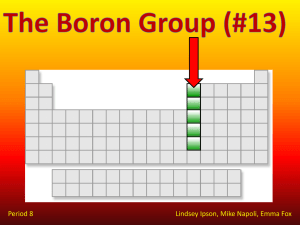PFA information
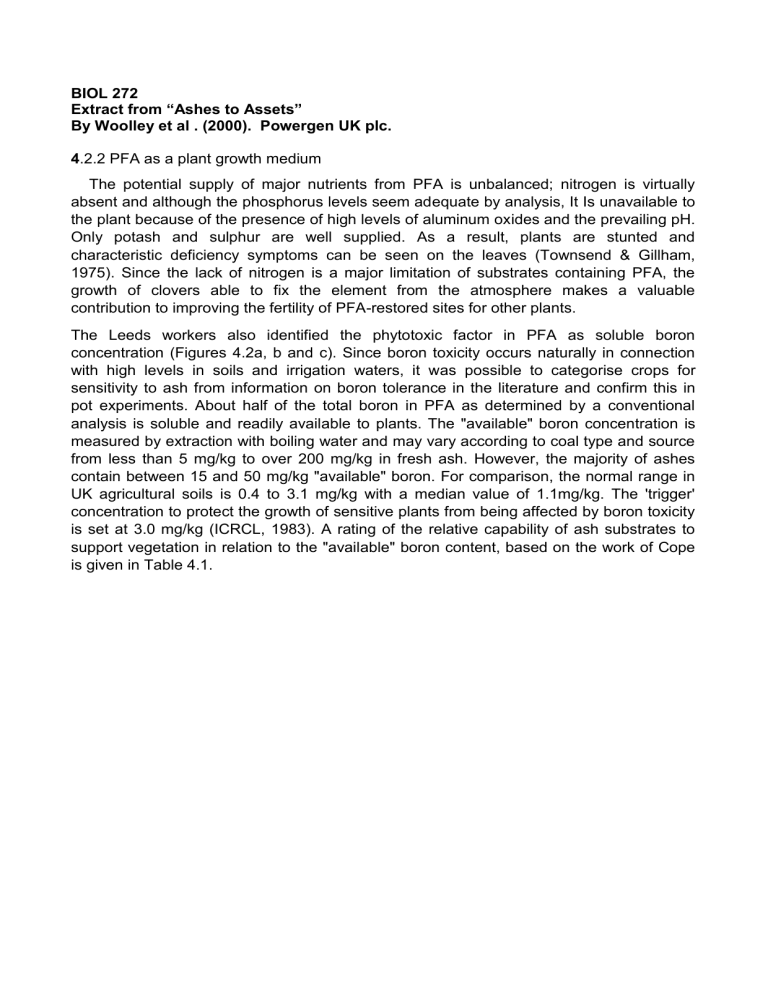
BIOL 272
Extract from “Ashes to Assets”
By Woolley et al . (2000). Powergen UK plc.
4 .2.2 PFA as a plant growth medium
The potential supply of major nutrients from PFA is unbalanced; nitrogen is virtually absent and although the phosphorus levels seem adequate by analysis, It Is unavailable to the plant because of the presence of high levels of aluminum oxides and the prevailing pH.
Only potash and sulphur are well supplied. As a result, plants are stunted and characteristic deficiency symptoms can be seen on the leaves (Townsend & Gillham,
1975). Since the lack of nitrogen is a major limitation of substrates containing PFA, the growth of clovers able to fix the element from the atmosphere makes a valuable contribution to improving the fertility of PFA-restored sites for other plants.
The Leeds workers also identified the phytotoxic factor in PFA as soluble boron concentration (Figures 4.2a, b and c). Since boron toxicity occurs naturally in connection with high levels in soils and irrigation waters, it was possible to categorise crops for sensitivity to ash from information on boron tolerance in the literature and confirm this in pot experiments. About half of the total boron in PFA as determined by a conventional analysis is soluble and readily available to plants. The "available" boron concentration is measured by extraction with boiling water and may vary according to coal type and source from less than 5 mg/kg to over 200 mg/kg in fresh ash. However, the majority of ashes contain between 15 and 50 mg/kg "available" boron. For comparison, the normal range in
UK agricultural soils is 0.4 to 3.1 mg/kg with a median value of 1.1mg/kg. The 'trigger' concentration to protect the growth of sensitive plants from being affected by boron toxicity is set at 3.0 mg/kg (ICRCL, 1983). A rating of the relative capability of ash substrates to support vegetation in relation to the "available" boron content, based on the work of Cope is given in Table 4.1.
Table 4.1
The severity of restrictions to vegetation growth according to PFA boron content.
Classification Available boron content
Few problems likely, even with sensitive species. <4.0mg/kg
Slight to moderate toxicity in many plants depending on species tolerance.
4.0 to 10mg/kg
Moderate to severe toxicity in most plants.
Only very tolerant species can be grown.
Highly toxic ash or soil.
11 to 20mg/kg
20 to 30mg/kg
>30 mg/kg
Table 4.2 A comparison of the characteristics of a fertile loam soil and PFA.
Soil PFA
Usually a wide range of particles from gravel to clay Range restricted to silt and fine-sand sized particles.
. pH stable at a value close to neutrality. Very alkaline pH (9 to 12) decreases slowly with weathering.
Well developed, open structure with durablecrumbs.
Structureless unless lagooned, sometimes cemented. Crumbs unstable to the weather.
Free draining. Aeration at rooting depth is good.
Drainage usually poor. Aeration inadequate beyond the surface layer.
No organic matter present.
Organic matter content of around 2 to
5% intimately associated with mineral particles.
Moisture retention adequate for plant growth.
Balanced microbial and soil animal populations.
Supply of major nutrients normally sufficient for plant growth and roughly in balance.
Good retention of fertiliser nutrients.
No excesses of chemical elements harmful to crops or livestock.
Very good moisture retention due to particle size composition.
Initially sterile. Colonised slowly due to lack of organic matter. Acquires a balanced fauna with earthworms, etc. over a long time scale.
Imbalanced .Usually devoid of nitrogen and phosphate deficient. Availability of other nutrients may be affected by high pH.
Retention of some nutrients is weak due to lack of clay minerals and organic matter. Nitrogen lost rapidly in high pH conditions.
Moderate to high initial salinity corrected by weathering. Certain elements are available at harmful levels
Table 4.3 The relative tolerance and susceptibility of crop plants to conditions in unweathered PFA substrates.
Susceptible Semi-tolerant Tolerant
Barley
Peas
Broad beans
Timothy
Meadow
Cocksfoot
Wheat
Rye
Forage maize
Perennial 'rye grass
Italian rye grass
Red fescue
Sweet clover
Sugar beet
Mangels
Runner & dwarf beans
Lupins
Potato
Tomato
White clover
Red clover
Beetroot
Spinach
Lettuce
Linseed
Brussels
Oilseed rape
Turnip
Swede
Lucerne
Mustard
Onion
Leek
Kale
Cabbage
Carrot
The treatment of the surface of PFA sites with chemicals to reduce the pH and to speed up the removal of soluble boron by weathering (or alternatively, to render it unavailable to plants) were investigated but no practicable measures were found. Organic additives such as poultry manure or chopped straw mixed into the upper 15 cm of ash have some effect but are difficult to incorporate with the agricultural Implements available. If no soil is available at all, granular material such as furnace bottom ash, colliery shale, subsoil or crushed bricks can be mixed in to stabilise the surface. These all act as physical diluents of any chemical factors limiting vegetation establishment which are present in the root zone but they contain virtually no nutrients. In this situation, the growing of a pioneer crop is regarded as the best way to proceed. Sweet clover [Melilotus alba] is the most suitable plant for this purpose as it can accumulate several hundred parts per million of boron in its tissues. Once sufficient growth has occurred, the tops are harvested and disposed of away from the site thereby removing boron and other substances from the upper layers of the
PFA in addition to the quantity lost by weathering. This action is repeated until conditions are suitable for the establishment of a permanent cover such as grassland.
The research programme suggested that the minimum soil depth necessary for full agricultural use of PFA-restored sites was around 30 cm and that fertiliser application should be generous - about 1.5 times the standard agricultural recommendation for the crop - until site conditions had ameliorated. When this depth of soil is not available, the after-uses are restricted since deep cultivations such as ploughing would lead to ash being brought to the surface. However, it was believed that "normal" yields of tolerant crops like grass and some cereals would be possible with up to twice the standard fertiliser dressing at soil depths down to 8 cm. Another factor in the yield equation was the good waterholding properties of PFA which results in crops on sites reclaimed with shallow layers of soil making better growth than those with deeper layers (over 60 cm). It is noticeable that they suffer from fewer growth checks in dry weather.
